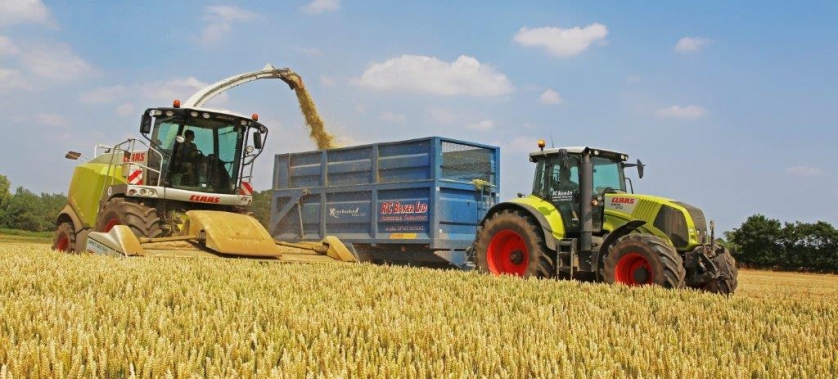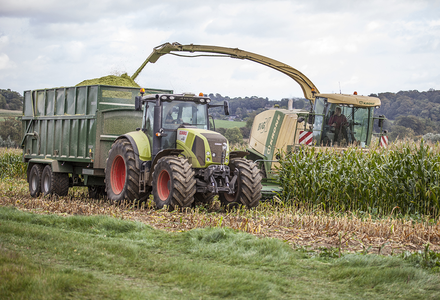Wholecrop silage
Wholecrop
The popularity of ensiling wholecrop cereals has increased in recent years as they offer a good alternative or complement to traditional fermented forages.

Wholecrop provides a good source of starch and is generally cheaper to produce than grass silage, but it is low in protein. Cereals are a high yielding crop that can be grown in areas which are unsuitable for maize. They offer great flexibility. As harvest takes place after first cut silage, a decision can be made on how much wholecrop is required. Any remaining area can be left to produce mature grain for sale or crimping.
Method of Preservation
Similar to grass silage, the crop is fermented in a clamp to produce lactic acid, which preserves the crop and makes the grains more digestible.
Wheat is most commonly used due to its high yields. Other good grain to straw ratio and digestible grains are used and any cereal crop can be ensiled.
The cereals are harvested at a range of dry matters.
As the crop is relatively high in dry matter, it is difficult to maintain a good fermentation. To reduce heating, an additive which combines an inoculant with an aerobic spoilage inhibitor is recommended.
Fermented Wholecrop (35-45% DM)
The ideal range for fermenting wholecrop is 35-45% DM. 40% is best, when the grain is at the soft cheddar stage.
High DM Wholecrop (56 - 65%DM)
Due to high grain maturity, wholecrop of this dry matter should be harvested using a primary processing mill. This is to ensure maximum digestion when the forage is fed. Due to the high DM, fermentation will be limited, but there is a high risk of aerobic spoilage, causing heating and nutrient loss.
Advantages of Wholecrop
- Complement to grass and maize silage
- Good starch and fibre levels
- Flexible crop
- Increases Dry Matter Intake (DMI)
- Early harvesting
Disadvantages of Wholecrop
- Low protein
- Narrow harvest window
- Wasteful fermentation and high DM losses
- Animal performance does not always reflect increased DMI

